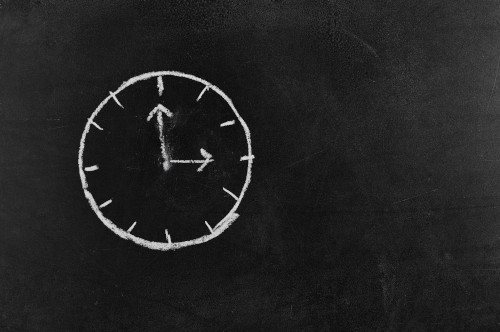A clock on the ground floor runs slower than a clock on the top floor; this is one of the effects of spacetime curvature caused by our planet’s mass. The effect is minuscule by human standards, but it is a real effect with measurable implications for satellite technology. In [2], it was pointed out that the smallness of this effect might be used to our advantage to probe time to an almost unimaginably small scale, at which point time may stop being continuous. In [1], we propose an experiment to test for this effect. We imagine setting a small mass in a quantum superposition of trajectories, passing at the same time from a path that is closer and a path that is farther away from another small mass. The curvature of spacetime is then slightly different along each of these trajectories, thus, the mass in superposition experiences two different times. Although the two times differ by a stupendously small amount, about equal to a second divided by a billion trillion trillion trillion times. This minuscule effect, as we show, would be measurable with sufficient precision with an apparatus that although difficult to construct is far from inconceivable. Physicists expect that the smooth description of spacetime breaks down at the Planck scale. If time is discrete, going in steps that tick at this minuscule rate, the experiment we propose can reveal it.
[1] An experiment to test the discreteness of time. Marios Christodoulou, Andrea Di Biagio, Pierre Martin-Dussaud).
[2] On the Possibility of Experimental Detection of the Discreteness of Time by Marios Christodoulou and Carlo Rovelli, Published in Frontiers in Physics
